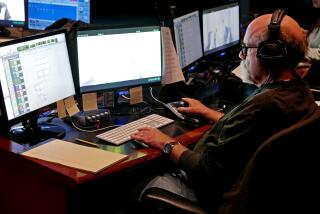Classic Hollywood: 80th birthday toast to ‘King Kong’
It’s been 80 years since a giant ape climbed to the top of the Empire State Building and held on to a tiny actress while planes flew over trying to shoot him down.
That scene in the original 1933 “King Kong” is one of the most memorable in cinema history.
“I don’t care how old you are, you feel for the poor gorilla and what happened to him,” said “Kong” historian John Michlig, who has written for the “Kong Is King” website.
Though there have been sequels and remakes — including Peter Jackson’s CGI-driven 2005 hit — none have matched the magic and romance of RKO’s original, produced and directed by Merian C. Cooper and Ernest Schoedsack.
PHOTOS - King Kong: The women in his life
“King Kong” stars Robert Armstrong as Cooper’s alter-ego Carl Denham, a brash filmmaker who takes an expedition to the mysterious Skull Island. They find a giant ape there and bring him back to New York in shackles to exploit him as the “Eighth Wonder of the World.”
Though Kong can be savage — he’s not above chewing the head off a native — the giant gorilla has a soul and is capable of real tenderness when he falls in love with Ann Darrow (Fay Wray), the beautiful blond actress in Denham’s film.
“I think people connect to the character for the same reason we go to the zoo to watch the orangutans and chimps — because they’re humanoid,” said film historian Scott Essman, hosting an 80th-anniversary screening of “King Kong” on March 24 at the Pomona Fox, where the film played in May 1933. “He is not human, but he’s human in many ways. He likes the girl. People relate to him.”
Thank goodness producer-director-writer Cooper didn’t follow through on his initial concept for “King Kong.” “His plan was get a gorilla and a bunch of Komodo dragons and just roll the film,” said Michlig.
But the master showman changed his plans when he met stop-motion special-effects wizard Willis O’Brien, who created the dinosaurs for 1925’s “The Lost World.” O’Brien was working at RKO on his project called “Creation,” said “Kong” historian Doug Turner, whose late father, George, cowrote the book “The Making of King Kong.”
“[‘Creation’] was a dinosaur epic kind of like ‘The Lost World,’” said Turner. “He assembled a crew of effects people for the film and shot a short test reel.”
Cooper had been brought to RKO to evaluate projects at the studio because it was spending too much, said Turner. One project Cooper canceled was “Creation.”
PHOTOS: Behind-the-scenes Classic Hollywood
“But what he found when he looked at Willis O’Brien’s work was a way to make a gorilla epic in the studio,” he said.
“King Kong,” which opened in March 1933 at Radio City Music Hall and the Roxy in New York City, didn’t seem destined to be a hit. It was released at the height of the Great Depression, around the time that newly inaugurated President Franklin D. Roosevelt had declared a “bank holiday” and closed the banks.
“So the banks are closed and you are telling people to come out to a movie,” said Michlig. “It should have failed, but it set records.”
It proved so popular that the sequel “Son of Kong” was released in theaters by year’s end.
What makes O’Brien’s effects even more remarkable and influential is that the mighty ape was just an 18-inch model made by sculptor Marcel Delgado, who began working with O’Brien on “The Lost World.”
Besides the model, said Michlig, “they built a full-sized hand and a full-sized head and shoulders.” Michlig noted that Cooper never actually revealed how big Kong was supposed to be. “Merian C. Cooper said, ‘King Kong is as big as he’s got to be.”’
“King Kong” also broke new ground with its use of miniature rear projection, as well as using Linwood Dunn’s new optical printer that matted together shots of the models with the actors.
Max Steiner’s pulsating score also changed the musical landscape of motion pictures. “Before Max Steiner, music was sort of incidental,” said Michlig. “You could pick up music from other sources and drop it in. Sound wasn’t that old.”
But Steiner’s score “was almost Wagnerian,” said stop-motion historian and character animator Chris Endicott. “There were motifs that would be repeated. It was quite an achievement.”
Are you an aficionado of iconic Hollywood? Like us on Facebook and go to the Classic Hollywood landing page to get more Times coverage.
PHOTOS AND MORE
VIDEO: The making of ‘Argo,’ ‘Les Miz’ and more
ENVELOPE: The latest awards buzz
PHOTOS: NC-17 movies: Ratings explained
More to Read
Only good movies
Get the Indie Focus newsletter, Mark Olsen's weekly guide to the world of cinema.
You may occasionally receive promotional content from the Los Angeles Times.











